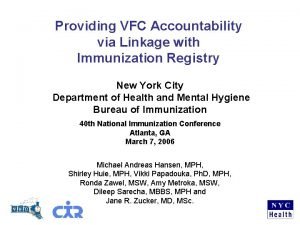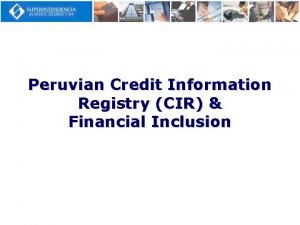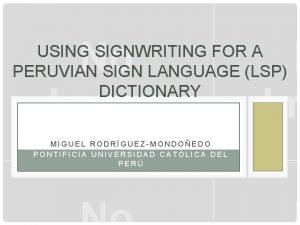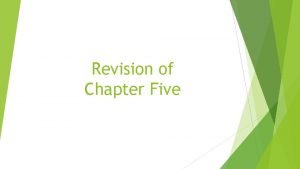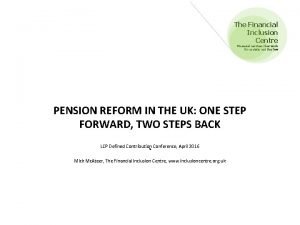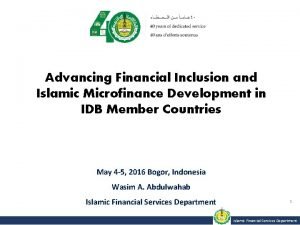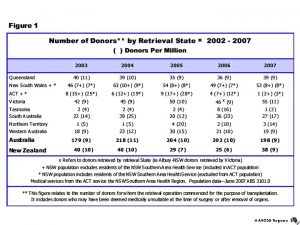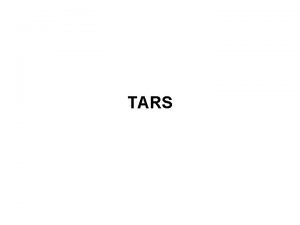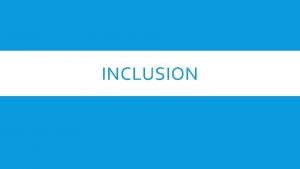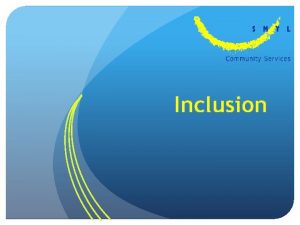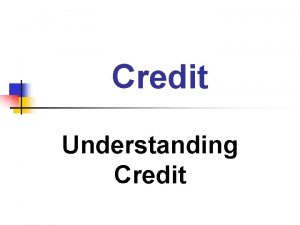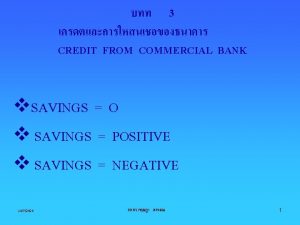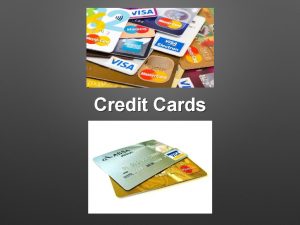Peruvian Credit Information Registry CIR Financial Inclusion Agenda
















- Slides: 16

Peruvian Credit Information Registry (CIR) & Financial Inclusion

Agenda CIR Characteristics History Objectives Information Validation Practical examples Impact on Financial Inclusion Benefits to microcredit and financial inclusion Evolution of microfinance Doing Business Evaluation

CIR: History 1990 92: ICC, exposure >S/. 13, 558 (US$ 5, 000 approx. ). The ICC (Confidential Credit Information -former credit registry) was limited to information of certain products (20 approx. including collateral) SBS code is created due to civil and taxes registry disorganization 1995 97: Internet Web develop by a third party An external consultant developed a simplified system which only validated the integrity of the data. The minimum credit exposure threshold was eliminated. 2000 2005 99: Web publication in SBS begins. 00: “New Accounting Manual” (NAM) 01: The CIR(Annex 6 NAM) replaces ICC 03: CIR’s system for internal and external (Web) users 05: CIR Datamart developed 07: Rectifications sent by Web

CIR: Objectives Tool for credit risk management Supply credit information of all debtors in the financial system to every financial institution and to the private credit registries. Financial Institutions (FIs) can access this information on SBS´s extranet website. Off-site credit risk supervision Quarterly reports on geographic concentration risk. Quarterly reports on economic groups and industry concentration risk. Ad-hoc reports on the realignment of debtors´ credit risk classification. Stress tests of loan loss reserves and capital requirements. Analysis of the evolution of credit risk and default rates, by company and type of credit. Analysis of foreign exchange credit risk and over indebtedness risk. PD, LGD and EAD preliminary data.

CIR: Information No minimum exposure threshold: The CIR consolidates the information of all debtors of the financial system. Report included as the Annex 6 of the NAM (new accounting manual) and sent (via CD or DVD) on a monthly basis. Includes debtor information (4. 8 MM, 5. 8 MM including write-offs) and accounting records (40 MM registries). The accounts included are dynamic: they can be added or deleted with few changes on the system. Currently, we have over 1, 000 accounts. The information is consolidated and sent to private credit registries and other public sector entities. The CIR also includes information on collateral and closed current accounts (Default on current account payments are published on the web and on an official newspaper).

CIR: information

CIR: information

CIR: information

CIR: Validation

CIR: Examples

CIR: Examples

CIR: Examples

Benefits to microcredit and financial inclusion Readily available and reliable source of information on the credit history of potential and current clients. Plays an instrumental part in the credit evaluation process: Provides up to date information on clients’ credit payments. Assists in analyzing the character of clients and their likelihood to pay. Includes information on debt written-off, regardless of how long ago it happened. Enables a better assessment of over-indebtedness risk – one of the main sources of risk microfinance institutions face. Reveals clients´ debt that might have not been disclosed in the application process. Shows lines of credit and hence potential future credit exposure.

Benefits to microcredit and financial inclusion Necessary for an effective credit monitoring process Monthly updates allow for the development of early warning systems and subsequent corrective actions to be taken. Timely identification of late payments at other institutions or a sudden and significant increase in debt levels. Identification of how the credit composition of a clients’ loans changes (consistent increase in cash withdrawals from credit cards and non decreasing loans might reveal a liquidity problem). Allows for the development of internal risk models Historical data on debt levels by types of loans, debtor risk classification, debtor industrial sector, loan currency, collateral, etc. , enables the development of differentiated credit risk models. Certain microfinance institutions have been developing scoring systems to assist them in credit origination and monitoring. Establishment of preliminary PDs, EADs & LGDs.

Microfinance evolution 25, 000 2, 500 20, 000 2, 000 15, 000 1, 500 10, 000 1, 000 500 - 01 - 20 01 01 -2 0 01 02 -2 0 01 03 -2 0 01 04 -2 0 01 05 -2 0 01 06 -2 0 01 07 -2 0 01 08 -2 0 01 09 -2 0 01 10 -2 01 1 Loan balance Debtors Number of microdinance clients (M) Microfinance loan balance and number of debtors evolution Microfinance loan balance (S/. MM) The growth of microfinance loans (total commercial loans <$100, 000) has been very dynamic, increasing at an average annual rate of 18. 7% in the last ten years compared to the 11. 5% of the total credit market. The microfinance loan balance in the Financial System is S/. 22, 787 MM which accounts for 15% of all loans, compared to 8% in 2001. The microfinance loan portfolio is comprised of credits to 2. 2 MM debtors. On the other hand, 8. 2% of all loans outstanding were originated by microfinance institutions (CMACs, CRACs, Edpymes).

Doing Business Evaluation Depth of credit information (on private or public CIRs): Both positive and negative information Data on both firms and individuals Data from retailers and utility companies as well as financial institutions More than two years of historical data Low (or no) threshold: Data on loan amounts below 1% of income per capita By law, borrowers have the right to access their data in the largest credit registry or bureau in the economy. Peru scored 6 out of 6 in the Depth of Information Index of the Doing Business Evaluation. This is one of the main reasons why Peru is ranked 15 th (out of 183 countries) in the accessibility of funding through the Financial System (Getting a Credit feature). Overall, Peru is ranked 36 th in the Doing Business Evaluation.
 čir čim čir čim vyvo vyvo
čir čim čir čim vyvo vyvo Cir online registry
Cir online registry Agenda cir
Agenda cir Peruvian sign language
Peruvian sign language Ocean currents
Ocean currents Jaguar ure
Jaguar ure The 14c activity of some ancient peruvian corn
The 14c activity of some ancient peruvian corn Umanagerd
Umanagerd Ant financial
Ant financial Cir and cil are symbols of _________.
Cir and cil are symbols of _________. Cops monitoring 10024 vanderbilt circle rockville md 20850
Cops monitoring 10024 vanderbilt circle rockville md 20850 Agenda sistemica y agenda institucional
Agenda sistemica y agenda institucional This can be avoided by giving credit where credit is due.
This can be avoided by giving credit where credit is due. 3-5 credit cards financial algebra
3-5 credit cards financial algebra Best financial credit union
Best financial credit union The agenda communicates important information such as
The agenda communicates important information such as Financial and non financial motivation
Financial and non financial motivation

